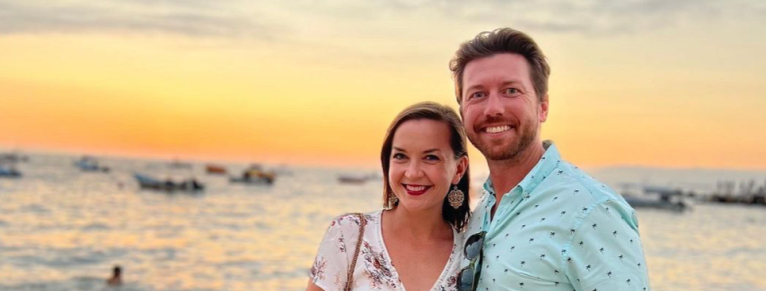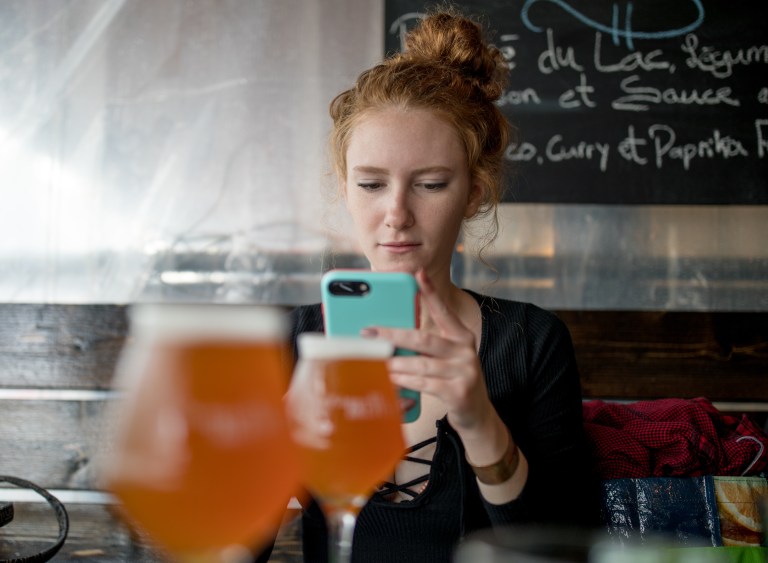How To (Dis)Appear And (Never) Be Found
The only thing I remember from high school geometry is learning that a reflection is not the same as its original, due to the three dimensional to two dimensional distortion. And I thought, “thank God.” My intellectual understanding did not allow me to see past the fact that I still related to myself as both an object and a distortion though, rather than a three dimensional human being.
I have struggled with body dysmorphia for as long as I can remember, frenziedly reading diet books in 4th grade, despite being underweight. After I was raped when I was 17, I developed a phobia (maybe not a full clinical phobia) of mirrors. I had internalized the feelings of worthlessness from being raped (and repeating the trauma with others) to such a degree that I could not look at myself. I could look at my body because I knew I could change it if I really wanted to, having survived on a maximum of 500 calories while running three miles daily for six months. But my face was not something I could change. So I would tie a towel below my eyes to put in my contacts or put on mascara.
My relationship to mirrors in public spaces became robotic and obsessive (because also why do public bathrooms insist on the worst fluorescent lighting on the market?). I’d look down when washing my hands. I’d check my outfit from three feet away while crossing my eyes. I wouldn’t wear my contacts so as to avoid seeing my face in contrast and would take off my glasses – from three feet away. If I was at home, I would leave the lights off and use the indirect light from the next room to brush my teeth. This continued for five years.
My two dimensional reflection gripped me so hard that I became one dimensional for fear of being seen. I flattened myself to be whatever it was that I thought others, men especially, wanted from me. All these men, I was so convinced they offered me something – attention, validation, though often not even that. Convinced that by molding myself into the shape of their perceived desires, that they would desire me. But they were just as empty, using meaningless sex to feel powerful – or worse, using non-consensual sex to feel powerful. Empty vessels trying to fill other empty vessels, but draining each other when all we needed was to fill our own cups.
Our brains are designed to match our outer reality to our inner experience. When you view your own world through the lenses of unworthiness and the belief that everyone else must hate you as much as you hate yourself, you can always find and create evidence for that – and you will always be searching for validation outside of yourself. To date, one of my most shameful moments is my sophomore year of college when I got too drunk and threw a full length mirror into the hallway while having a fairly public meltdown about not receiving male attention. I think I also once blacked out at a party and cornered a dude I had hooked up with and flashed back in while screaming in his face about how he thought I was ugly. Not a good look. But shame only breeds further self-contempt. So I now offer compassion to that fragile, shattered self (and that shattered mirror). I find solace in the quote, “so many people from your past know a version of you that no longer exists.”
Our relationship to ourselves sets the dynamic for every other relationship we have, meaning that I could not allow myself to be seen by anyone else either. Yet, I continually put myself in potentially dangerous situations trying to get validation at any cost. I’d already been raped, so what did my safety matter? My therapist recently dropped a heavy truth bomb on me, saying, “your need for validation is greater than your need for survival.” (Oof.)
As a kid, I had a book titled “How to Disappear Completely and Never Be Found.” I remember my mom being hesitant to buy it for me, because I had a proclivity to wanting to run away, defiantly standing at the end of my block proclaiming that I would not come home – even though I wasn’t allowed to cross the street and ultimately had to cave. I think about this title now and all of the defenses I put on to try to not be seen. It hasn’t worked, because people still see me, but they primarily see me as an object, because that is the distortion that I wear and the lens I project into the world.
Brené Brown has a chapter in her book on belonging (Braving the Wilderness) titled “People are hard to hate close up. Move in.” When I have allowed people to see me close up, the experience has been profound – or at least it is when I am not fixating on whether or not someone is going to speak to me again because they maybe saw my unplucked chin hairs in direct sunlight. This type of thinking takes you out of your body and experience, and thus the ability to be present. And also – fuck anyone who is judging you that harshly (but don’t actually fuck them).
Brené Brown (#bless) has another quote: “The story of human intimacy is one of constantly allowing ourselves to see those we love most deeply in a new, more fractured light. Look hard. Risk that.” This fractured light is three dimensional, a way that we are physically incapable of seeing ourselves from our own perspective. What we are all really craving is for others to reveal their raw, luminous, three dimensional selves, which gives us permission to do the same.
I could fall in love with almost anyone because I do look hard and always want to see that, but am not willing to risk seeing myself in that light. Though, there is a distinction between rose-colored glasses and this fractured light. The way that I see others is not a gift, it is also a distortion – looking past being treated poorly because I just want someone to love me without doing the work of actually showing up. When no one is home, there is nothing to be attracted to. Stop pouring yourself out for others hoping that they will fill your self-inflicted emptiness.
Admitting that I am worthy has been the slow dissolution of all of my (outdated) identities. And then what? Emptiness – and then choice. Choice of what you want to fill that space with (hint: it is you, not other people). There is a Japanese form of art called kintsugi where broken ceramics are pieced back together and the fracture lines are painted over with gold. The brokenness adds value, refinement, uniqueness, and is something to be displayed with pride. All of our internal bowls have been broken, shattered. Are you willing to appear in that fractured light and allow others to see and know the story of your own gold – your rupture and repair? Are you first willing to see yourself in that shimmering light – or at least see that you exist beyond your distortions of self?





